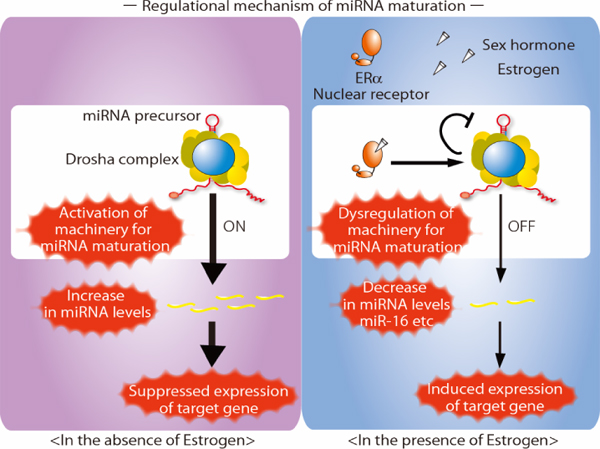Maturation of microRNA is hormonally regulated by a nuclear receptor
Variable physiological actions are elicited through gene expressions regulated by diverse molecular mechanisms. In particular, it has been defined that transcriptional regulations play crucial roles in the events. It has been recently uncovered that microRNA (miRNA), one of small noncoding RNA members, is a key factor in ‘post-transcriptional gene silencing’, suggesting that regulation of miRNA biogenesis is significant in fine tuning of gene expression. Here we report a molecular mechanism how estrogen positively controls half-lives of cellular mRNAs. It is well established that 3’ UTR (untranslated regions) of mRNAs is involved in mRNA half-life control, however the molecular basis remained unclear. Recently, the mRNA 3’ UTR has emerged to be targeted by miRNA for attenuating mRNA degradation and translation. In the present study, firstly we found physical interaction of Drosha complex with ERα, resulting in suppressing miRNA processing. Down-regulation in some miRNA species led to stabilize mRNA of the VEGF, an estrogen target gene, since the VEGF 3’ UTR is the target for the regulated miRNA species. Thus, activated estrogen receptor by estrogen binding appears an inhibitor for biogenesis of miRNAs targeting the mRNAs of the estrogen target genes. The present study have uncovered a novel pathway of hormonal gene regulations.
Program member
Shigeaki Kato (Institute of Molecular and Cellular Biosciences, The University of Tokyo)

